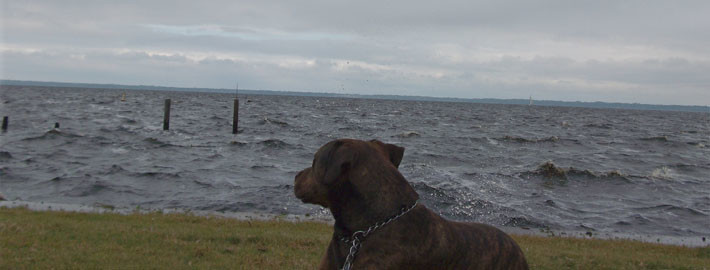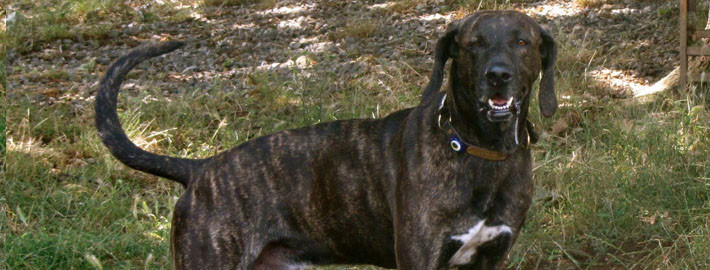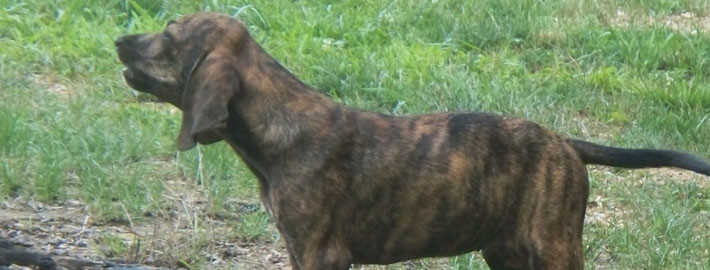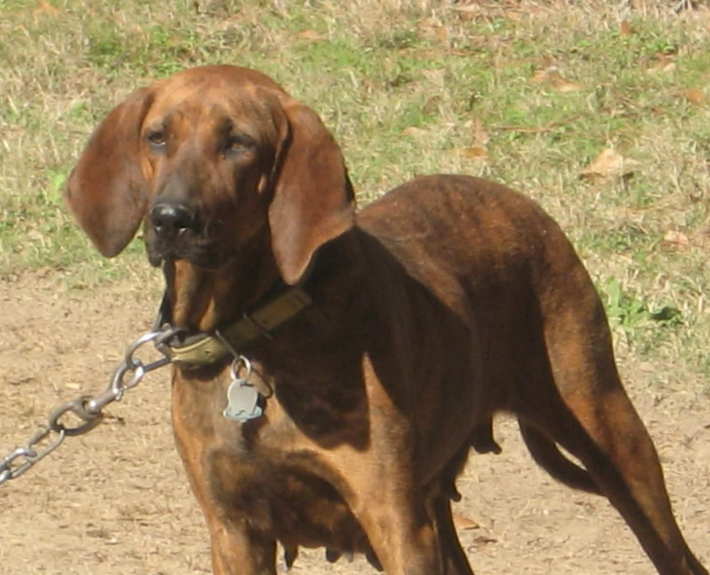What makes the Plott Hound Unique?
They have a split personality, but in a good way. Around the home, they are gentle and agreeable, excellent with children and perfectly happy to hang out in the living room. Plotts love their families and want to be included in all group activities. However, out on the trail, Plott Hounds take on a different persona: focused, alert, determined and energetic. Whether you live in the city or the country make sure your Plott Hound gets lots of time outdoors.
Breed Groups
Page Contents
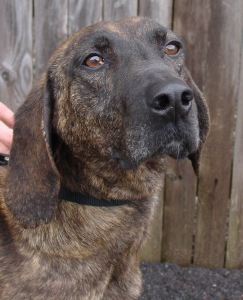
SnapShot
| Size: | Males – 20 to 25 in (55 to 71 cm) Females – 20 to 23 in (53 to 63 cm |
| Weight: | Males – 50 to 60 lb (23 to 27 kg) Females – 40 to 55 lb (18 to 25 kg) |
| Origin: | Germany, United States |
| Life Span: | 12 to 14 years |
| Colour: | Brindles, Tan, Chocolate, Yellow, Orange, Gray, Blue, Liver, Buckskin, Brown, Black |
| Litter Size: | 6-10 Puppies |
Is the Plott Hound Right For You?
Plotts are eager to please, loyal, intelligent and alert in the home, but are aggressive, bold and fearless while hunting. Owners should be prepared to hear the Plott’s “voice” in the home at times. An athletic breed, they require daily exercise, but their short coats are low maintenance.
If you are considering purchasing a Plott here.
- Hound Group; AKC recognized in 2006.
- Ranging in size from 20 to 25 inches tall at the shoulder and 40 to 60 pounds.
- Wild boar/bear hunter.
In 5 Words
- Alert
- Bold
- Loyal
- Intelligent
- Courage
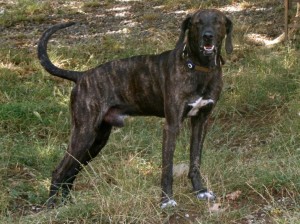
Characteristics
Learn About the Plott Hound
Description
General Description
The Plott Hound should be athletic, muscular, and agile in appearance. It should be neither low-set and heavy, nor leggy and light: it has medium build. Its expression should be one of intelligence, confidence, and determination. Its skin should not be baggy like that of a Bloodhound. The Plott is a strongly built yet moderate hound, with a distinct brindle-colored coat. Their appearance suggests the capacity for speed, stamina and endurance. The Plott may have an identification mark on the hound used to identify the dog when hunting. Such a mark is not penalized in conformation shows.
Size
Plott Hounds should be approximately 20 to 25 in (55 to 71 cm) at the withers for males, 20 to 23 in (53 to 63 cm) for females. Males should weigh 50 to 60 lb (23 to 27 kg). Females should weigh 40 to 55 lb (18 to 25 kg).
Coat
The Plott Hound’s hair should be fine to medium in texture, short or medium in length, and have a smooth and glossy appearance. According to the National Plott Hound Association, the dog’s hair should be brindled. Brindled is defined as “Finely streaked or striped effect or pattern of black or tan hairs with hairs of a lighter or darker background color. Shades of colors accepted: yellow brindle, red brindle, tan brindle, brown brindle, black brindle, grey brindle, and maltese (slate grey, blue brindle).” Acceptable colors are any of the above-mentioned brindles. Black with brindle trim in the alternative. The Association dictates that while some white on chest and/or feet is permissible, white anywhere else is a fault.
Short History of the Plott Hound
This pack-hunting dog breed was developed in North Carolina more than 200 years ago to hunt bear and wild boar. They are still used as hunting dogs today and have proven their worth as pack hunters. They also participate in tracking and other dog sports. Plotts are best suited to life in the country where they have plenty of room to roam.
Developed by a German immigrant family in North Carolina (the Plott Family), the Plott Hound probably derived from a mix of German hounds and North American Curs. Bred for several centuries as bear hunters and trackers, Plott Hounds later became popular in the U.S. as coonhounds.
Temperament
This is one of those breeds where it’s a good idea to know what you’re getting into before you acquire one. Smart and loyal, the Plott loves and protects the kids he’s raised with and makes a great family dog. Sounds good so far, right? Absolutely, but the Plott needs a firm and patient leader to bring out his best. He’s not the ideal choice for an inexperienced dog owner.
A Plott can be stubborn and independent — typical hound traits — and he must be trained with patience and positive reinforcement. And just like kids on summer vacation, the Plott is likely to forget what he’s learned if he doesn’t get regular practice. He learns well through repetition or by following the lead of a more experienced dog.
Caring for Your Plott Hound
Grooming & Bathing
The Plott has a distinctive coat. It’s smooth and fine, but thick enough to protect the dog as he hunts in cold, wet or rough conditions. A few Plotts have a double coat: a short, soft, thick under coat topped by a longer, smoother, stiffer hairs.
Caring for a Plott’s coat is easy. Groom it at least weekly with a rubber curry brush to remove dead hair and distribute skin oils. If your Plott spends a lot of time indoors, you might want to brush him more often to keep dead hair on the brush and off your furniture and clothing. Plotts with a double coat will shed more heavily and need to be brushed two or three times a week.
Exercise & Training
The Plott Hound needs a lot of physical exercise, which includes a daily, long, brisk walk or jog. While out on the walk the dog must be made to heel beside or behind the person holding the lead, as in a dog’s mind the leader leads the way, and that leader needs to be the human. This well-muscled and rather lean-boned dog has the endurance and stamina to work all day and well into the night. The Plott Hound should have chances to run free, but is born a natural hunter and has a tendency to run off and hunt if not kept in a well-fenced area while exercising off the lead.

